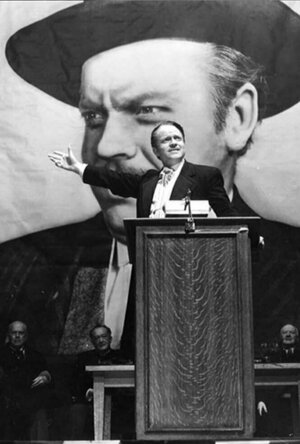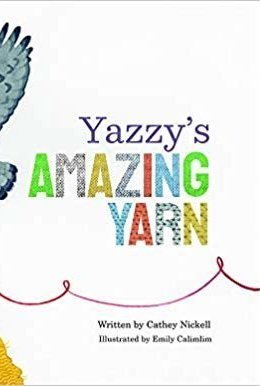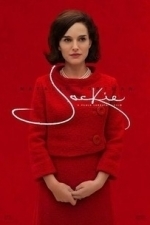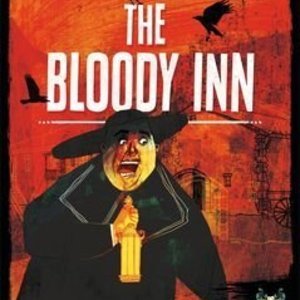
High Heels Designer Games – Modern Shoes for Girls
Lifestyle and Games
App
*** Start creating beautiful custom shoes for modern girls now! *** ** Do you enjoy playing fashion...
BankofMarquis (1832 KP) rated Mank (2020) in Movies
Jan 7, 2021
And…the Netflix film MANK does not disappoint in this regard.
Starring Oscar winning actor Gary Oldman (he won the Oscar for portraying Sir Winston Churchill in DARKEST HOUR), Mank tells the tale of the writing of the screenplay of CITIZEN KANE by screenwriter Herman Mankiewicz. It is an intriguing story of a self-destructive, alcoholic artist (is there any other kind in this kind of film) that (ultimately) produces one of the best scripts in Hollywood history, despite (or maybe because of) his condition and the people he interacts with along the way.
Directed by David Fincher (FIGHT CLUB) - who is one of my favorite Directors working today - MANK starts slow but brews to a satisfying conclusion as Fincher focuses on the man and the relationships he has with the people around him, rather than the circumstances, which then draws to a forceful conclusion.
Gary Oldman is, of course, stellar as Herman “Mank” Mankiewicz, the writer at the center of the story. This film hinges on this performance as the titular Mank is in almost every scene of this film - and at the beginning I was worried that Fincher was going to let Oldman revert to his “hammy” ways (a very real possibility with Oldman if he is left unchecked by a Director), but Fincher reels Oldman in just enough for him to bring a portrait of a troubled man, who has sold his soul to work and alcohol. This character needs to find that soul if he is to succeed. Since Mank won the Oscar for his screenplay - and I’ve already stated that I think the CITIZEN KANE screenplay is one of the best written of all time - you know how it will turn out, but it is fascinating (and satisfying) to watch Oldman on this journey.
Fincher, of course, is smart enough to surround Oldman with some very good Supporting Actors, most notably the always evil Charles Dance (Tywin Lannister on GAME OF THRONES) as William Randolph Hearst (the inspiration for Charles Foster Kane). Dance spends most of the film observing Mank but in the final “confrontation” scene between the two, the screen sparkles as two wonderful thespians throw down.
Others in the Supporting cast - like Lilly Collins, Tom Burke (as Orson Welles), Jamie McShane and, especially Arliss Howard (as Louis B. Mayer) bring heft and the ability to go “toe to toe” with Oldman, not a small task.
Special notice has to be made of the work of Amanda Seyfried as Marion Davies - Hearst’s mistress and a character that is used as a “throw away toy” in Citizen Kane. Davis and Mank form an interesting bond and the platonic chemistry between Seyfried and Oldman is strong. I gotta admit that when Seyfried first burst on the scene in such films as MAMA MIA and MEAN GIRLS, I figured she was just the “pretty young Rom-Com girl of the time” and would come and go quickly, but she has rounded into a very impressive actress and I can unequivocally state that I was wrong about her. She can act with the best of them.
The Cinematography by Erik Messerschmidt is also a very important part of this film - as he (and Fincher) attempt to recreate in this film the look/feel of CITIZEN KANE and they pull this off very, very well.
If you can get through the slow start of the film - and if you can stomach a protagonist that is not a very nice person in most of this film, than you’ll be rewarded by a rich film experience.
Letter Grade: A-
8 stars (out of10) and you can take that to the Bank(ofMarquis)
Heather Cranmer (2721 KP) rated Yazzy's Amazing Yarn in Books
Aug 24, 2019 (Updated Aug 24, 2019)
Yazzy is a young girl who loves knitting just like her mom. When Yazzy and her mom walk by a park, Yazzy's mom reminisces about how the park was a lot better back when she was a kid. That night, Yazzy can't sleep. She's thinking about what her mom told her about the park. With the help of her friends, Yazzy decides to yarn bomb the park to bring back some of the cheer her mom experienced as a little girl.
I found the plot for Yazzy's Amazing Yarn to be interesting. My 4 year old son lost interest after a few pages though, but I don't think he's quite the demographic this book would appeal to. To me, I believe this book would appeal most to little girls aged 6 to 10 years of age. I also think the dialogue would be more understandable in this age group. Anyway, I enjoyed learning about what Yazzy and her friends would come up with to make the park more colorful and lively. When the girls leave the house for the park before it opens, I did wonder if they let Yazzy's mom know they were leaving the house. I guess that's just the mom in me though. I would have liked something written in the book that said a parent was notified of them leaving. Anyway, everything else was great, and yarn bombing was a fantastic idea to make a dreary old park come to life. I loved how the author added some history about yarn bombing at the end of the book. I had no idea yarn bombing was a thing until I read Yazzy's Amazing Yarn. From my take on it, it's when someone knits something for an item in their neighborhood such as for stop signs, traffic lights, parks, sidewalks, trees, etc.
The character of Yazzy was likable, and I think young girls can and will relate to her quite easily. She comes across as someone with a kind heart who likes to make others happy. Yazzy seems selfless and like a happy go lucky girl. I loved the diversity of all the characters I came across in Yazzy's Amazing Yarn, but it would have been even better if one of Yazzy's friends had been a boy to show that boy's like knitting as well and that it's not only for females. I was a bit disappointed that only girls were shown knitting. However, that didn't stop me from enjoying this great book.
The illustrations for Yazzy's Amazing Yarn were done superbly. Emily Calimlim, the illustrator, is such a talented artist, and it definitely showed throughout this book. I loved the different vibrant colors used throughout the pictures! My favorite scenes were the ones that took place in the park when it came to illustrations. I felt this was when the colors and illustrations jumped up at me from the page the most.
All in all, Yazzy's Amazing Yarn is such a feel good funtastic (not a typo) story that will warm everyone's heart. The story itself is beautifully written, and the illustrations are gorgeous! I would recommend Yazzy's Amazing Yarn by Cathey Graham Nickell to all ages due to the feel good factor although I do believe little girls ages 6 - 10 years would find it the most appealing. Yazzy's Amazing Yarn gets a 4 out of 5 stars from me!
--
(A special thank you to Lone Star Book Blog Tours for providing me with an eBook of Yazzy's Amazing Yarn by Cathey Graham Nickell in exchange for an honest and unbiased review.)

Khmer Video Dictionary - Translate, Learn and Speak with Video Phrasebook
Travel and Reference
App
In Khmer speaking Cambodia, the title 'Lok' is used to address a man and 'Lok Srey' for a woman,...

Steve - The Jumping Dinosaur!
Games and Entertainment
App
A funny 2D infinite runner it´s coming, meet ‘Steve’, you new friend that lives in your...
Bob Mann (459 KP) rated Jackie (2016) in Movies
Sep 29, 2021
Through this interview we flashback to see Jackie as the young First Lady engaged in recording a TV special for a tour of the White House: nervous, unsure of herself and with a ‘baby girl’ voice. This contrasts with her demeanour in the interview which – although subject to emotional outburst and grief – is assured, confident and above all extremely assertive. We live the film through Jackie’s eyes as she experiences the arrival in Dallas, the traumatic events of November 22nd in Dealey Plaza, the return home to Washington and the complicated arrangement of the President’s funeral.
This is an acting tour de force for Natalie Portman, who is astonishingly emotional as the grief-stricken ex-first lady. She nails this role utterly and completely. Having already won the Golden Globe for an actress in a dramatic role, you would be a foolish man to bet against her not taking the Oscar. (I know I said just the other week that I though Emma Stone should get it for “La La Land” – as another Golden Globe winner, for the Comedy/Musical category – and a large part of my heart would still really like to see Stone win it…. But excellent as that performance was, this is a far more challenging role.)
In a key supporting role is Peter Sarsgaard (“The Magnificent Seven”) as Bobby Kennedy (although his lookalike is not one of the best: that accolade I would give to Gaspard Koenig, in an un-speaking role, as the young Ted Kennedy).
Also providing interesting support as Jackie’s priest is John Hurt (“Alien”, “Dr Who”) and, as Jackie’s close friend, the artist Bill Walton, is Richard E Grant (“Withnail and I”, who as he grows older is looking more and more like Geoffrey Rush – I was sure it was him!).
Director Pablo Larraín (whose previous work I am not familiar with) automatically assumes that EVERYONE has the background history to understand the narrative without further explanation: perhaps as this happened 54 years ago, this is a bit of a presumption for younger viewers? Naturally for people of my advanced years, these events are as burned into our collective psyches as the images in the Zapruder film.
While the film focuses predominantly, and brilliantly, on Jackie’s mental state, the film does gently question (via an outburst from Bobby) as to what JFK actually achieved in his all too short presidency – ‘Will he be remembered for resolving the Cuban missile crisis: something he originally created?’ rants Bobby. In reality, JFK is remembered in history for this assassination and the lost potential for what he might have done. I would have liked the script to have delved a little bit further into that collective soul-searching.
This is a very sombre movie in tone, from the bleak opening, with a soundtrack of sonorous strings, to the bleak weather-swept scenes at Arlington cemetery. The cinematography (by Stéphane Fontaine, “Rust and Bone”) cleverly contrasts between the vibrant hues of Jackie’s “Camelot” to the washed-out blueish tones of the post-assassination events. If you don’t feel depressed going into this film, you probably will be coming out! But the journey is a satisfying one nonetheless, and the script by Noah Oppenheim – in a SIGNIFICANT departure from his previous teen-flick screenplays for “Allegiant” and “The Maze Runner” – is both tight and thought-provoking.
Overall, a recommended watch which comes with a prediction: “And the Oscar goes to… Natalie Portman”.
Finally, note that for those of a squeamish disposition, there is a very graphic depiction of the assassination from Jackie’s point-of-view…. but this is not until nearly the end of the film, so you are reasonably safe until then!
Also as a final general whinge, could directors PLEASE place an embargo on the logos of more than two production companies coming up at the start of a film? This has about six of them and is farcical, aping the (very amusing) parody in “Family Guy” (as shown here).
Purple Phoenix Games (2266 KP) rated The Bloody Inn in Tabletop Games
Feb 12, 2022
The Bloody Inn is a card-drafting, hand management, horror game of recruiting accomplices and having them carry out dastardly deeds to secure the most money at the end of the game. In it, players take on the roles of one of the inn’s staff members and control pawns in their evil schemes in order to swindle and kill for mountains of francs (it’s set in France, pre-Euro).
To setup, place the main board on the table, give each player the components of their color choice, two Peasant cards, a 10 franc (f) check, and a player aid card. The “traveler deck” is assembled and shuffled per the rules, and placed on the Entrance side of the board. Players choose one room to place a key token in their color, and several gray neutral key tokens are placed in other rooms. Unsuspecting travelers will be staying in these rooms each night. Per the rules, the greediest player is given the first player card and the mischief may begin!
The Bloody Inn is played over several rounds, and each round has players completing three phases: Welcome Travelers, Player Actions, and End of Round. Players will Welcome Travelers to signify the start of the round by the first player drawing one card from the deck at a time and choosing in which room they will be placed.
After Travelers have been welcomed and turn in for the evening, the second phase may begin: Player Actions. In turn order players will be able to perform two actions each round. Players may choose from five different actions, and actions can be repeated for the second action of the round. Players may Bribe a Guest by discarding cards from hand equal to the printed value on the target card’s front. Initially all players simply employ the two starter Peasants, so Bribing is only performed on cards that show a value of 0-2. When a player Bribes a guest, they essentially spend cards from hand to recruit the new guest to their employ. These new employees (accomplices) are then available to be used on future actions. One or two Peasants may also be Bribed from the bistro, adding to a player’s hand of usable human resources.
A player may instead choose to Kill a Guest by similarly discarding the appropriate number of accomplices and adding the freshly-slain guest to their tableau, face-down. The card backs feature a coffin with their “rank” (action number) printed on it. Corpses normally cause no issues, but they will need to be buried under an Annex in order to collect the money in their pockets. Players may use an action to Build an Annex by discarding the appropriate number of accomplices and using a card from hand to build and staff the Annex. Annexes can be used for the action printed on the card bottom, and/or as a housing for corpses, with the Corpses being sent to any player’s Annex via the Bury a Corpse action. Discard the requisite number of accomplices to bury a corpse, and avoid suspicion from the Law.
If none of these actions are attractive to the player, or if they simply wish, they may instead Pass and launder money from the village notary. To do this, either reduce the number of francs from the Wealth Track on the main board in order to gain a 10f check, or turn in a check for 10f on the Wealth Track.
Once all players have taken their two actions, the End of Round is performed. Firstly, if any Travelers remain belonging to the Police type (signified by pistol icons on the top of the card), they will conduct an investigation, finding any unburied corpses. Should a corpse be found in this way, the owning player will need to pay 10f for the local undertaker to dispose of the body respectfully. This not only costs the player 10f, but also the amount of money that could have been gained if they had only buried them or dealt with the Police traveler prior. Next, the Travelers who remain all wake up feeling refreshed and leave the inn by being placed in the discard pile. Once the board has been cleared of all Travelers, accomplices must be paid their wages for their help. For each accomplice in hand, the players must pay 1f from the Wealth Track.
Play continues in this fashion until the main Traveler deck has been depleted twice. Then, players add up their francs and the player with the most in francs and checks is the winner, and just the greatest little murderer/robber/briber in all the land!
Components. This game really has a modest amount of components, but they are all similarly great quality. The main board acts as the inn’s room display, the Wealth Track, AND the bistro (where Peasants are discarded, as opposed to being placed in the normal discard pile). I love when components pull double or triple duty. That said, the player aids not only remind the players of the phases and actions from which they may choose, but it also provides the player with a starter Annex that can be used to bury their first corpse! HOW COOL IS THAT?! However, the greatest thing that stands out in regards to the components is the overall look and feel of the game. The character artist for this one is Weberson Santiago, and he has also illustrated games such as the new Quest (the new version of The Resistance: Avalon), Coup, and the new Whirling Witchcraft. I adore his art style, even though I shouldn’t. My typical preference of character art is semi-realism (like that of Kwanchai Moriya), but this style is really unique and perfectly applied to the theme. Great matchup of artist and game here. I do have one silly wish for this game: PLEASE change the player colors. I mean, I am so tired of having the choice between red, blue, green, and yellow. Take a Cue from my good friend Scott Brady and use one of the more interesting color choices. I mean, even to fit in with the theme here a more appropriate palette could include a brown, black, orange, and yellow or something. Be bold!!
I knew right away that this was a great game for me. Yes, the theme is super dark and macabre, which is rare for me to enjoy, but I would only play this with adults anyway so I am unbothered by it. However, the puzzle that lies within this box is one that I thoroughly enjoy solving every round. What I neglected to mention up top is the fact that when actions are taken (Bribing, Killing, Building Annexes, and Burying Corpses) if you happen to have certain card types in hand, then the cost of discards is reduced by the number of cards present. For example, if I were to Bribe a Police card from the rooms in my first action, they have an affinity for killing (messed up, I know) and will thus help me to perform a Kill action on the next turn by reducing the number of accomplices I would need to discard for that action. Side benefit: by taking the Police Travelers off the board, they then will not perform their investigations in the morning.
Another aspect I truly enjoy about The Bloody Inn is that many cards have that dual-purpose mechanic I appreciate. The player aid is also an Annex. Brilliant! Many of the Annex cards can also offer one-time or recurring powers. It’s just so satisfying to grab cards that can combo well with each other in order to fulfill your evil plans. Every card is important, and when they can offer more than one benefit, I am a happy gamer.
I cannot express how happy I am to have decided to purchase this one. I have seen the BGG ratings and rankings, but always thought I wouldn’t like it due to its very adult theme, but boy was I wrong! This is one of the best games I have played recently and I hope to even bling it out a bit, maybe even with new player colors like I suggested earlier. Laura and my wife were able to join me for this one and they agree with me – this one is excellent and definitely worth consideration into anyone’s collection. Purple Phoenix Games gives this one a dastardly 15 / 18. Yeah, it’s perfect for Halloweentime, but also for ANY time. If you are looking for something a little grim and grisly with lighter rules and lots of interesting choices, you need to check out The Bloody Inn. Grab lots of Police cards and go on a killing spree for me!
Purple Phoenix Games (2266 KP) rated Sagrada in Tabletop Games
Jun 12, 2019
In Sagrada, you are an artist who has been tasked with creating a beautiful stained glass window. Working piece by piece, you build a masterpiece – the likes of which have never before been witnessed. Finding the perfect pieces can be tricky, but through careful use of your tools and with your artistic vision, you can create the best window in the town! The game is played over 10 rounds in which players draft dice and place them in their windows, following certain placement restrictions. A set number of tools are available for use, and can aid you in manipulating the dice to your benefit. Points are scored based on successful completion of private and public objectives, and the player with the highest score at the end of 10 drafting rounds is the winner!
My favorite part about playing Sagrada solo is that the game is essentially played the same way, regardless of player count. The only difference is how you win! In both group and solo play, each player will draft two dice every round. In group play, any leftover dice are discarded, while in solo play, the remaining two dice will be added towards the Target Score – the score you are trying to beat at the end of the game! To find the Target Score, you add all of the die values of your unused dice from each round. If, at the end of the 10 rounds, you have earned more points than the Target Score, you win! But if the Target Score is higher than your final score, you lose.
The game play differences are simple enough, but actually winning the game solo is a different story. I have played Sagrada solo quite a bit, and have won maybe 25% of the time. Depending on which window card and objectives are in play, and because of placement restrictions, I often have to sacrifice high-valued dice to the Target Score. And since there are no placement restrictions for the Target Score, and two dice are added to it each round, it is very easy for that score to sky-rocket. I either barely pull off a win, or I lose by a huge margin. Playing in a group is nicer in this regard because the other players have the same placement restrictions that I have – nobody is just getting points for free. Without the Target Score, there really is no way to play Sagrada solo, but it makes the game feel a little imbalanced to me.
Just because it is difficult to win solo does not mean that I do not like the game. It requires quite a bit of strategy, and that keeps me engaged for the entire game. There are dice placement restrictions based on color AND value, so there are two different ways in which you have to constantly be strategizing. You can’t just focus on either value or color – your strategy must always be changing based on which color dice are drawn and what values are subsequently rolled. Even with the amount of strategy required, Sagrada actually plays pretty quickly as a solo game, and I really like that. I like the challenge of this game, and often try to play until I can win. Since I can finish an entire solo game in probably 10-15 minutes, I am able to get multiple plays in a row!
Sagrada is a challenging game to play solo, but not in a way that feels futile. I don’t win a lot, but the strategic implications and the pretty dice colors are what keep me coming back to this game! If you haven’t tried Sagrada solo yet, I’d encourage you to give it a shot. But be warned – you might not always win.
https://purplephoenixgames.wordpress.com/2019/02/26/solo-chronicles-sagrada/
Gareth von Kallenbach (980 KP) rated Walk the Line (2005) in Movies
Aug 14, 2019
Thankfully in the film Walk the Line Writer Gil Dennis and Writer/Director James Mangold capture the very essence of The Man in Black. Unlike many biopics that focus on the rise and fall of an individual, Walk the Line strives to balance than man and his demons without losing the compassion of the character.
The film stars Joaquin Phoenix as Johnny Cash, a man who rose from poverty in Dyess Arkansas to become on of the most beloved and enduring entertainers in history. Chronicling portions of his childhood, and the hardships he endured as well as his sting in the Air Force, we are shown things that helped shape the man he was to become. Shortly after his Air Force career, Johnny marries Vivian (Ginnifer Goodwin), and they start a family. Struggling to make ends meet as a door to door salesman, and facing pressure to take a job with her father in San Antonio Johnny manages to gain an audition for Sun Records in Nashville.
When told in the audition that his Gospel songs will not sell, Johnny instead performs one of his own compositions and earns a record contract. Before long, he and his band are on the road playing with the likes of Jerry Lee Lewis, Elvis Presley, and June Carter (Reese Witherspoon). June who has been part of a singing family
as well as an object of admiration for Johnny since their childhoods soon becomes a friend to Johnny as he copes with rising fame and the pressures and temptations of life on the road.
As Johnny spends more and more time on the road, tensions between him and Vivian grow causing Johnny to delve deeper into the temptations that are available to him as a star. During this time, Johhny becomes obsessed with June, who wile attracted to Johnny has just come from a failed marriage and does not want to break up Johnny’s family. It is against this backdrop that the unusual courtship between the two begins. They spend time with one another on the road, they talk for hours on end, and even perform duets with one another on stage, yet Johnny’s love for June remains a source of frustration that only leads him deeper into his destructive behaviors.
While the addition that grips Johnny is a driving part of the film, the main focus of the story is the love between Johnny and June and their unusual courtship that survived despite marriages, addictions, denials, and their own insecurities. Phoenix and Witherspoon are amazing and give Oscar Caliber performances that are easily the best in recent years. Not only do they both convey the mannerisms of their flesh and blood counterparts, but they convey solid chemistry and compassion from the audience.
While one can say that Johnny was an adulterer and a drug addict, his gentle nature, compassion, and humanity are abundantly clear in the way he is portrayed by Phoenix. We do not see Cash as a stuck up rock star, we see him as a simple human being, who used his gifts to connect with the masses yet never lost site of his heart. His tenderness, honesty, and devotion to his music, June, and eventually himself are clear and Phoenix is able to portray this by a reserved and endearing manner that captures the man he is portraying. Far too many films of this type are loaded with scenes of conflict, screaming, conflict and destruction that it was refreshing to see Johnny attempt to win June by stubbornness, and persistence yet never losing his easy going mannerisms despite being wracked by addiction.
Much has been made of the decision to let Phoenix and Witherspoon sing their parts rather than dub the voices. Unlike in the film “Ray” where Jaime Foxx had his singing dubbed over, the accurate and heartfelt interpretations of the songs only underscores the triumph and complexity of their performances.
Not just a good film but a great film, Walk the Line is an endearing and entertaining film that keeps you engrossed from start to finish. If you are not a fan of Johnny Cash when you see this film, at the least you will find a new found respect for this American Legend.
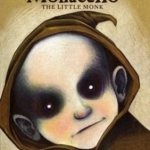
Monacello: The Little Monk: Book 1
Geraldine McCaughrean and Jana Diemberger
Book
A haunting legend from the Undercity of Naples "Goblin" "Gremlin!" "Demon!" Strange little creature....
